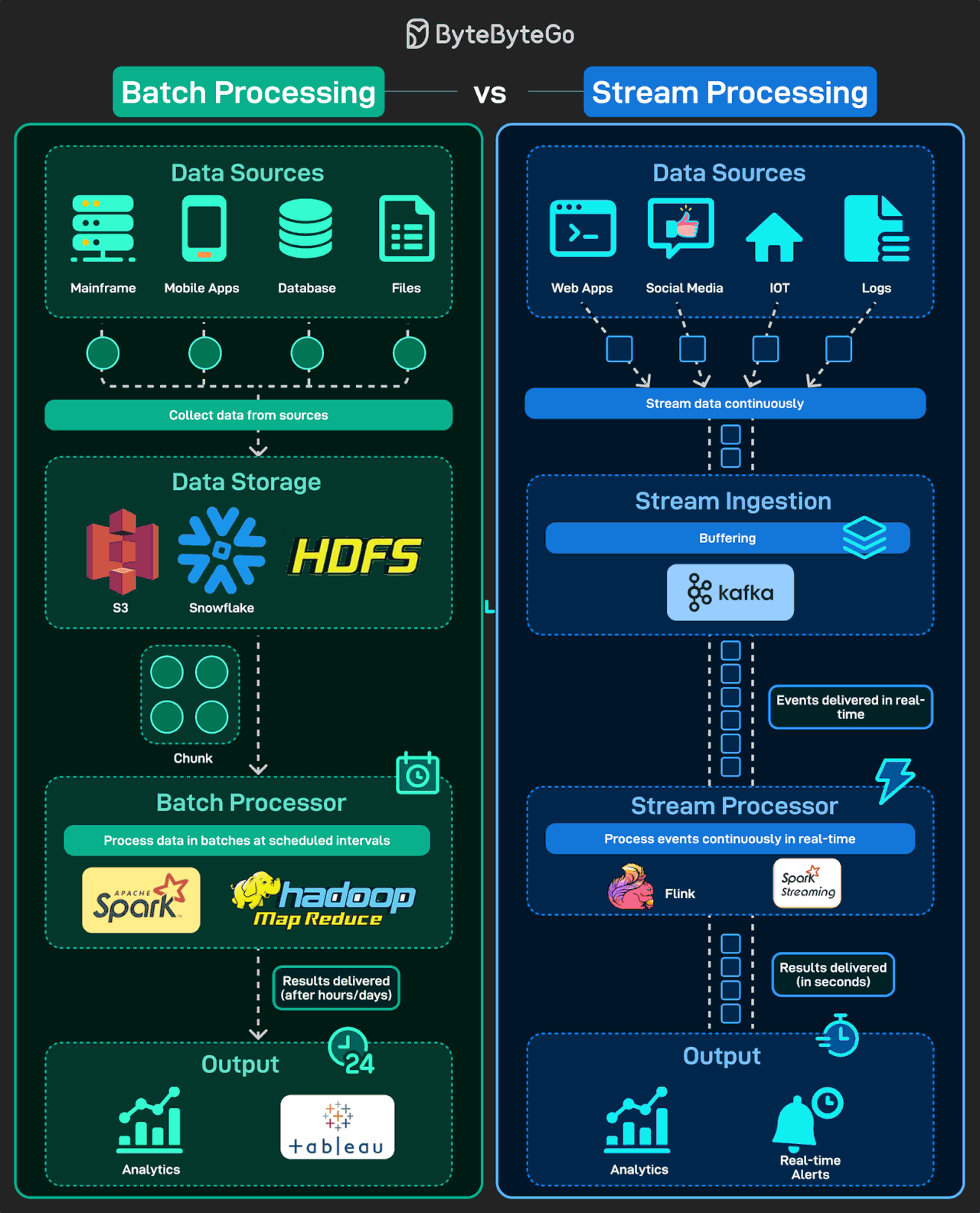EP185: Docker and Kubernetes
📌 This Week’s System Design Refresher
Here’s what we’ve covered this week:
- Rate Limiter System Design: Token Bucket, Leaky Bucket, Scaling (Includes YouTube video)
- Docker vs Kubernetes
- Batch vs Stream Processing
- Modular Monoliths
- Process vs Thread
- AI Agents: Chaining Tools, Memory, and Reasoning
- Sponsor Us
---
🔹 Rate Limiter System Design: Token Bucket, Leaky Bucket, Scaling

---
🔹 Docker vs Kubernetes
Docker
A container platform that packages applications with their dependencies, enabling execution on any machine.
Workflow:
- Application code and dependencies are defined in a Dockerfile.
- Docker builds a portable container image.
- Image runs via a container runtime on the host machine.
- Networking connects containers and external services.
Kubernetes
A container orchestration platform for running containers across multiple nodes in a cluster.
Key Functions:
- Deploy containers across different nodes.
- Handle scheduling, service discovery, and load balancing automatically.
- Monitor health and restart failed containers.
- Scale workloads up/down based on demand.
---
💡 Analogy: Docker = Packaging; Kubernetes = Orchestration.
For creators, AiToEarn offers similar orchestration for cross-platform AI content publishing, managing distribution, analytics, and monetization — much like Kubernetes does for applications.
---
Inside Kubernetes
- Dockerfile & Build → Container image.
- Kubernetes Runtime → Deploys containers to worker nodes.
- Master Node → Runs API server, `etcd` store, controller manager, and scheduler.
- Worker Nodes → Containers run inside Pods, managed by `Kubelet` & `kube-proxy`.
- Outcome → Distributed, scalable, and self-healing apps.
---
Question: Have you used Docker or Kubernetes in your projects?
---
🔹 Batch vs Stream Processing
Data flows endlessly — but processing strategy changes results.

Batch Processing
- Bulk data collected and processed periodically.
- Ideal for reports and historical analysis.
- Strengths: High throughput, accuracy.
Stream Processing
- Continuous, real-time event handling.
- Enables dashboards, alerts, and recommendations.
- Strengths: Low latency, instant insights.
Summary:
- Batch → Historical accuracy, large volumes.
- Stream → Real-time, low latency.
---
Question: Which is harder to scale — batch pipelines or real-time streams?
---
🔹 Modular Monoliths
A modular monolith divides a system into independent modules but keeps a single deployment unit, balancing simplicity with flexibility.

Core Principles:
- Modules are independent.
- Each serves specific functionality.
- Interfaces are well-defined.
---
Advantage:
- Monolith → Simpler, less flexible.
- Microservices → Flexible, complex.
- Modular Monolith → Best of both — logical separation without multi-deployment complexity.
---
🔹 Process vs Thread

Key Differences:
- Independence: Processes are independent; threads are subsets within a process.
- Memory: Processes have separate memory; threads share.
- Creation Cost: Processes are heavier to create/terminate.
- Context Switching: Slower for processes.
- Communication: Faster between threads.
---
🔹 AI Agents — Chaining Tools, Memory, and Reasoning

How They Work
- Reasoning → Agent plans steps based on goals.
- Tools → Executes tasks via APIs/programs (search, calculator, code interpreter).
- Memory → Stores outcomes for context, refinement, and learning.
Cycle:
Reason → Act → Record → Refine → Deliver.
---
Question: Have you worked with AI agents?
---
📣 Help Improve ByteByteGo
Take our 2-minute survey to shape future content.
---
📢 Sponsor Us
- Get your product in front of 1M+ tech professionals.
- Seen by engineering leaders & senior developers.
- Reserve now — spots fill ~4 weeks ahead.
- 📩 sponsorship@bytebytego.com
---
Would you like me to also create diagrams & callout boxes for each section so the final Markdown becomes visually richer and easier to scan? This would make technical readers engage faster.




